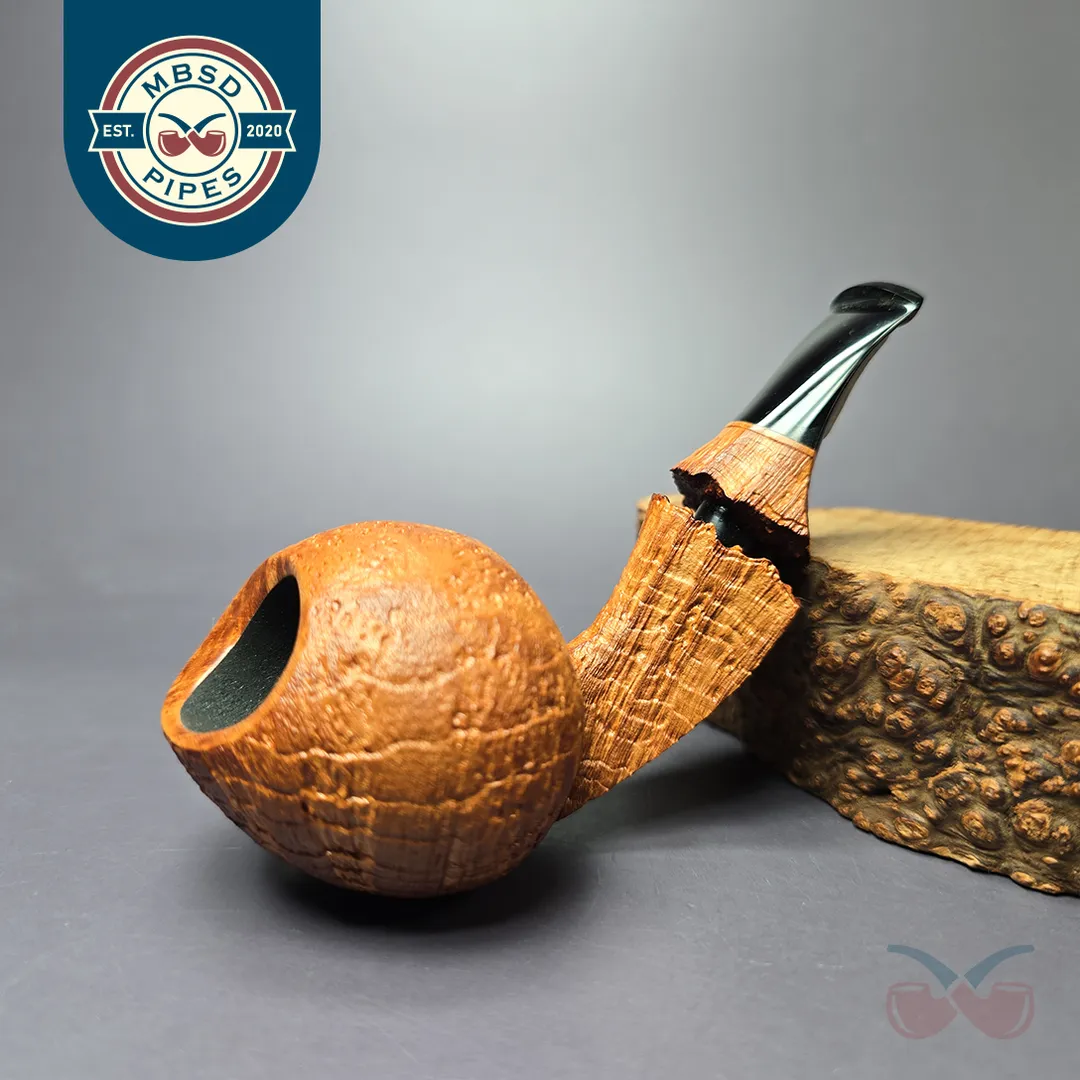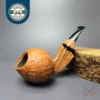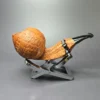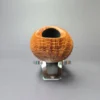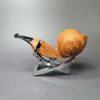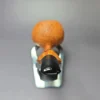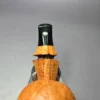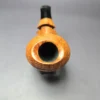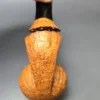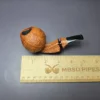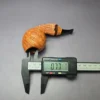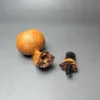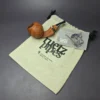Christian Ruetz Sandblasted “Double Bark” Cobra Handmade Briar Pipe, New
Out of stock
Description
Tyrol’s Christian Ruetz may well be the most exciting and acclaimed pipe maker to have come out of Austria since Peter Matzhold. A committed pipe smoker since his youth, Ruetz crafted his first pipe in 2014, using a carving knife gifted by his father-in-law and wood from a cherry tree. Ruetz was, from then on, hooked and soon moved onto briar, though he has maintained a relatively low-tech approach to pipe construction throughout in his career. Though Ruetz’s experiments with briar began a decade ago, in recent years his exercises in style have coalesced into an instantly recognizable identity, which has coincided with a no less than meteoric rise within the international pipe community and industry. As is something of a tradition for today’s artisans, Ruetz has spent time in the workshop of Denmark’s Tom Eltang further refining his techniques, yet it must also be stressed that Ruetz’s design philosophy is distinct from—and, to an extent, contrary to—that of much of modern Scandinavian pipe making. Against the functionalism of Eltang et al., Ruetz is far more of a Romantik. In his own words, his style is encompassed by three words: Natur, Rauheit, and Imperfektion, (roughly, “nature,” “ruggedness/rawness,” and “imperfection”). This style and underlying ethos comes from a life spent recognizing the natural world for what it is—including the sublime, towering ranges of the Eastern Alps visible from his workshop windows.
As I mentioned in last week’s newsletter, Christian Ruetz’s style is difficult to compare to any one particular precedent, though I did say that, if I had to pick out a likeness, it would be Age Bogelund, of Bari Piber, and/or Micah Cryder, of Yeti. The “and/or” here is significant, because different Ruetz designs bear different degrees of resemblance to either. This one is far more on the Bogelund side, in part because of a shared affinity between the two for organic shaping and—most recognizably—for briar stem inlays. Bogelund’s were a signature of his work at Bari and the pipes he made under his own name, just as they have become for Ruetz, but while Bogelund tended toward ornate, geometric applications, Ruetz opts instead for what he calls the doppelte Borke (“double bark”), characterized by jagged, plateaux edges around the shank end and tenon. The sandblasting on this piece, as will become evident from other Ruetz listings this evening, is also highly distinctive—rugged as a rockfall, yet carefully coordinated with the complex, cobra-esque form taken by the stummel.
Details:
Length: 4.8″ / 121.9mm
Bowl Width: 0.77 / 19.55mm
Bowl Depth: 1.32″ / 33.52mm
Weight: 1.8oz / 52g
Additional information
| Weight | 15 oz |
|---|
| Condition | New |
|---|

